December 2014
The Bill Bruford Rototom Kit Project
23/12/14 12:03
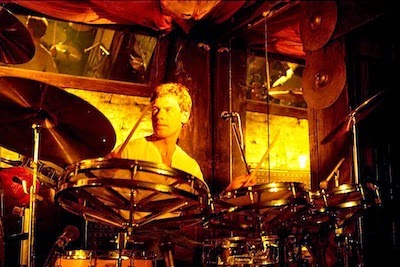
One of my biggest musical influences was drummer Bill Bruford and the late '70s and early 1980 albums, "Feels Good To Me", "One of A Kind" and "Gradually Going Tornado", featuring his amazing-sounding Remo Rototom kit. Originally developed by Al Payson and Michael Colgrass, it was Bruford who really put them on the map when he first started using the rototoms during his stint with the prog-rock super-group, U.K. I was fortunate to see that band, featuring bassist John Wetton, keyboards/violinist Eddie Jobson and guitarist Allan Holdsworth in 1978, at the old Painter's Mill in Maryland when they opened for guitarist Al DiMeola. Bruford only used a 14" and an 18" rototom with that group, however their power and ability to cut through guitars and synthesizers were quite evident. They were amazing, however the band was short-lived, with Bruford and Holdsworth leaving after only one album.
After Bruford left U.K. he began his own group, featuring Holdsworth, bassist Jeff Berlin and keyboardist Dave Stewart, and added yet another 14" rototom at a higher pitch. I would see the new Bruford group twice more, in 1979 and 1980, however Holdsworth left before the U.S. tours and was replaced by his protege, the "unknown" John Clark. even without Holdsworth, the Bruford groups were still amazing. The sound of the rototoms had a huge effect on me, so much so that I bought 3 rototoms, (two 14" and one 16" rototoms), before moving to NYC in 1980. I was fortunate to hook up with my long-time musical partner, keyboardist Seth Elgart; we rented a space from Saturday Night drummer Buddy Williams and the use of his Ludwig kit at NYC's fabled Music Building on 8th Avenue. They didn't go un-noticed and I soon found myself playing them with the likes of Brian Eno, the group The Same (featuring keyboardist Carter Burwell, bassist Stanley Adler, Stephen Bray), Madonna and the Breakfast Club!
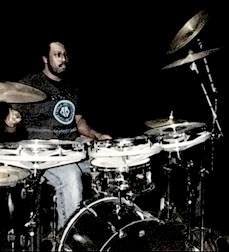
Bruford's group came to an end in 1980; a live album "The Bruford Tapes" and a DVD called "Rock Goes to College" are all that remain of that band and that kit. Bruford would pair down to a single 14" rototom when King Crimson reconvened in 1981, but his rototom kit would be gone forever. Drummer Terry Bozzio would play his version of the rototom kit; a double bass, five rototom affair in the post-Bruford U.K., but the days of the rototom kits had come to an end. Before moving to LA, I sold my rototoms and like Bruford and many others during the '80s, delved into the new world of electronics; Simmons, Dynacord, Roland and Yamaha drums.
While in Boston 1990, I purchased the three new rototoms I have to this day. During my more recent quest to build a hybrid acoustic, electronic kit, I thought I'd try my hand at converting old rototoms ala Bruford. My first replicated version is a Ddrum kit that features the same sized Rototoms as Bruford (two 14" and one 18"), plus Ddrum RedShot triggers on every drum.

I researched a variety of mesh heads; Hart Dynamic Magnums and Maxxums were being used on my Ddrum kit already, but I decided to try out the Remo Silent Stroke heads. They were extremely quiet, and responsive. Using the Alesis Trigger I/O and a MacBook Pro, I was able to trigger not only every sampled sound in my library, but actual rototom samples. It was kind of strange, but a nice surprise. I actually ended up mounting a Pintech trigger inside the bass drum; (the Ddrum bass trigger never seemed to behave properly), and used an old Viking 6.5" x 14" snare with yet another Pintech inside.
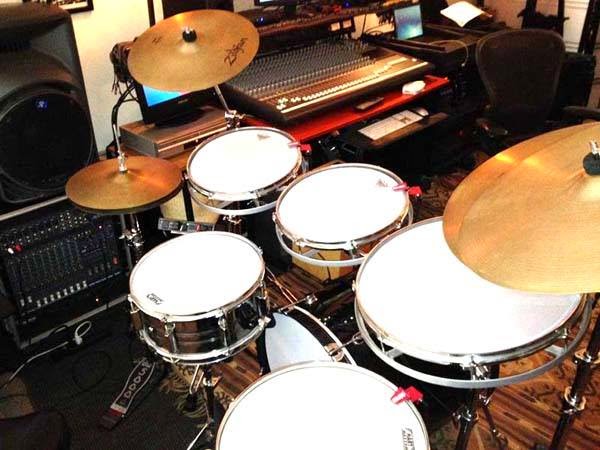
The Ddrum/Rototom kit worked great, but nothing sounds like an acoustic rototom. With that in mind, it was time to strip off the mesh heads and add some Evans clear hydraulic heads. For an upcoming recording project, I decided to use parts of my Gretsch kit, my 22" x 16" bass drum, 16" x 16" floor tom, and my 6.5" x 14" Tama Snare. The one thing about the acoustic rototoms is that they are extremely loud, with tons of attack and a bit of ring when using rim shots. The "clanging and all-mighty clattering sound" that Bruford raved about all those years ago, is what made the rototoms famous. Even back in the '80s, (often without the benefit of great EQ), I usually had to muffle the rototoms with a little padding, to take out a bit of the ring and the overtones.
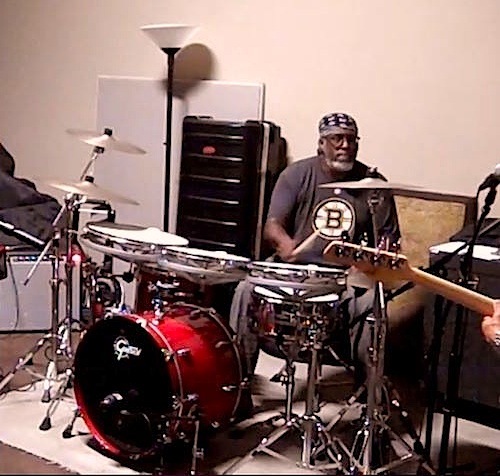
After listening to those Bruford albums again, and watching the video of his 1979 group, I was able to tune the kit accordingly and lo and behold, that classic sound was back. Clearly the rototom kit can't be used for all situations, and as I found out back in 1980, they seem to sound and work best in an electrically charged, environment with electric piano, organ, synths, electric guitar and bass. The textures generated by organ and synth chords seem to be perfect for the those cascading rototom fills, flams and paradiddles, just as they did with Bruford. Fortunately for me, I'm involved in a few projects right now, where playing them in that unique, prog-rock style works wonderfully.
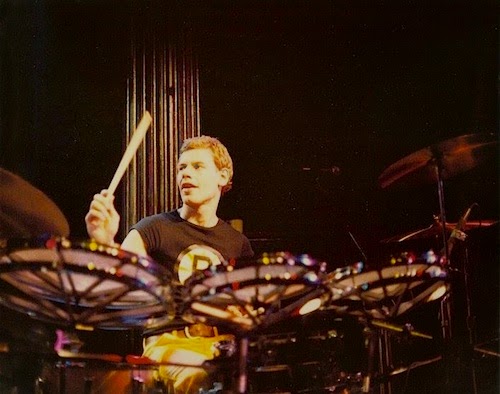
With my rekindled love affair with the rototoms, I have to give kudos to my man John Kelman of All About Jazz for his insightful reviews of the 1978-'80 Bill Bruford remasters and bonus tracks, (especially the live, previously unreleased "Manacles"; perhaps a pre-cursor to Bruford's drum solo on King Crimson's "Discipline"!)... It's been fun revisiting these albums and DVD alongside his well researched and informative writing... You can read his articles and more here: http://www.allaboutjazz.com/bill-bruford-feels-good-to-me-and-one-of-a-kind-by-john-kelman.php and http://www.allaboutjazz.com/bill-bruford-the-bruford-tapes-and-gradually-going-tornado-by-john-kelman.php and http://www.allaboutjazz.com/rock-goes-to-college-bill-bruford-winterfold-records-review-by-john-kelman.php
Bruford's music continues to inspire me, some 35 years later; My favorite examples of him and his rototoms can be heard on tunes from his debut album "Feels Good To Me" like "Beelzebub" and "Sample and Hold"; His next album, "One Of A Kind" album with "Hells Bells", "Fainting in Coils", "Forever Until Sunday", "The Abingdon Chasp", "Travels With Myself and Someone Else"; "Land's End" and "Q.E.D.", on "Gradually Going Tornado"; and the 1979 live album "The Bruford Tapes". His live DVD from Oxford Polytechnic captures them wonderfully and his book, "When In Doubt, Roll" breaks down many of those tunes for study, notation and insight. I'll try to do the master justice when I record my next album this summer in San Francisco with keyboardist Seth Elgart and a few nifty combinations of guitarists and bassists! Stay tuned...